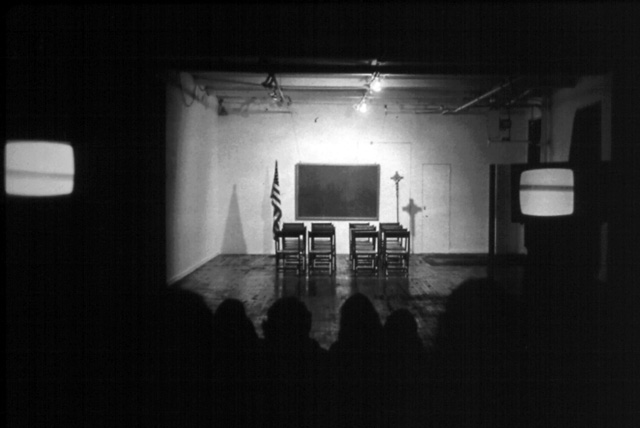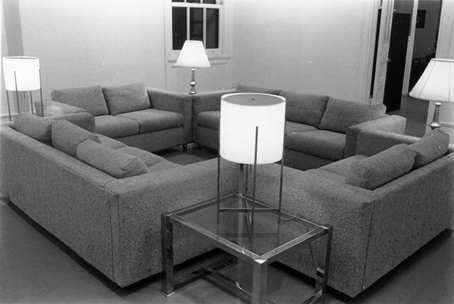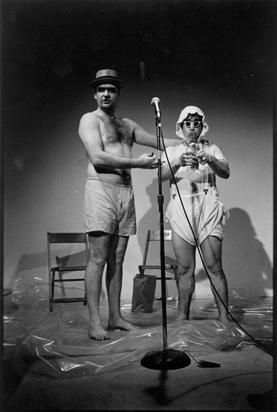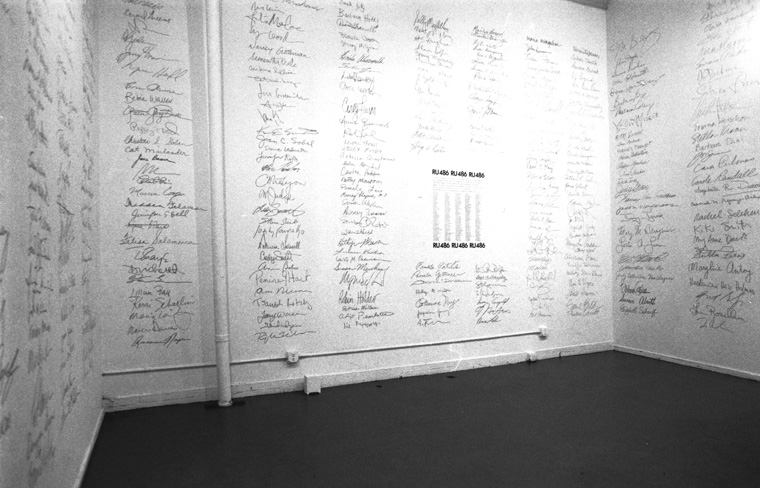
Artists Space was founded in 1972 by arts administrator Trudie Grace and critic Irving Sandler as a pilot project for the New York State Council on the Arts (NYSCA), with the goal of assisting young, emerging artists. Artists Space quickly became a leading organization in the downtown alternative arts scene in New York, which also included burgeoning institutions such as the 112 Workshop (later renamed White Columns), and the Institute for Art and Urban Resources (later named P.S. 1 Contemporary Art Center).

During its first year, Artists Space exhibitions were organized under the strict guidelines of artists chosen to select other artists to exhibit. Other early efforts to engage and help artists included the Emergency Materials Fund, which assisted artists with the presentation of their work at an established nonprofit venue, and the Independent Exhibitions Program, which supported the needs of artists who were involved in the production and presentation of work outside the context of an existing institutional structure. Through the decades, Artists Space has adapted to the shifting needs and concerns of artists and audiences in and outside of New York.
Artists Space has been the site of provocative discussion and experimentation within contemporary artistic debate, from the postmodern image (Douglas Crimp’s Pictures, 1977) to identity politics (Adrian Piper’s It’s Just Art, 1981), to institutional critique (Michael Asher’s Untitled, 1988) to the AIDS Crisis (Nan Goldin’s Witnesses: Against our Vanishing, 1989), and Artists Space has introduced a number of artists to a wider public, amongst them Joan Jonas, Cindy Sherman, Jeff Koons, Sherrie Levine, Louise Lawler, Laurie Anderson, Barbara Bloom, John Miller, John Baldessari, Jack Smith, Andrea Fraser, Haim Steinbach, Tim Rollins, Lyle Ashton Harris, Ashley Bickerton, Peter Halley, Lari Pittman, Group Material, Stuart Sherman, Barbara Kruger, Laurie Simmons, Anthony McCall, Fred Wilson, Felix Gonzalez-Torres, Mike Kelley, Judith Barry, Michael Smith, Robert Longo, and Jenny Holzer.

Today the program oscillates between local and global critical debates, while creating a platform for artists that are underrepresented within the context of New York, such as Miyoko Ito (Heart of Hearts, 2018), Lukas Duwenhogger (2016), Hito Steryl (2015), and Tom of Finland (The Pleasure of Play, 2015). We have presented the work of artists and cooperatives who challenge institutional norms and capitalist structures, such as Jack Smith (Art Crust of Spiritual Oasis, 2018), Coop Fund, Amalle Dublon and Constantina Zavitsanos, Devin Kenny, John Neff (Authorization Sessions, 2016-2017, 2018), and Cameron Rowland (91020000, 2016). In addition, Artists Space has staged exhibitions that address a politics of visibility, including Unholding, 2018 and Decolonize this Place, 2016.






